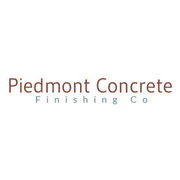5 Ways to Repair Your Concrete Driveway

If your concrete driveway is discolored or damaged, you’re dealing with a tripping hazard along with lowered curb appeal and property value. Completely replacing it is an expensive process, but luckily, you have a variety of options to repair it. There’s no one-size-fits-all solution when it comes to repairing your driveway, so consider which of the following solutions matches your needs.
How to Repair a Damaged Driveway
1. Engraving or Recoloring
Over time, your driveway loses its original coloring due to oil leaks and exposure to the elements, but restoring it is a fairly simple process. If your concrete driveway has little to no structural damage but looks worn and faded, engraving or recoloring it will make it look new again without costing a fortune.
Recoloring is the simpler option because you’re simply adding a new coat of stain overtop your current one, then resealing it to lock in the color. Engraving also involves restaining the driveway, but it also gives you the option to cut unique patterns into the concrete, giving it a more personalized look.
2. Patching
Being exposed to the freeze-thaw cycle and daily traffic, most concrete driveways will eventually crack. These cracks typically start out small and grow over time, but if you spot it early enough, a simple patch is a suitable solution. If you have a crack or divot in your driveway that’s less than a quarter-inch, use a liquid crack-filler to easily restore it.
3. Resurfacing
 While patching will restore your concrete, it’s not a long-term solution, as it makes it more susceptible to water leaking in and reopening the hole. A more permanent solution to cracking or scaling is to resurface the driveway. This adds another layer of concrete to level out any cracks and restore the surface. Just be sure your driveway is properly cleaned to ensure a smooth resurface.
While patching will restore your concrete, it’s not a long-term solution, as it makes it more susceptible to water leaking in and reopening the hole. A more permanent solution to cracking or scaling is to resurface the driveway. This adds another layer of concrete to level out any cracks and restore the surface. Just be sure your driveway is properly cleaned to ensure a smooth resurface.
4. Slab Jacking
When your concrete driveway suffers more severe damage, such as sunken or settled concrete, you’ll need slab jacking to level it out again. This process involves drilling small holes into the affected portion of your concrete and pumping a finely crushed limestone aggregate underneath it. This fills in any areas that have been eroded by water or soil compaction and raises the concrete back to its original height.
5. Polyurethane Foam Injection
Polyurethane foam injections follow the same process as slab jacking, but instead of a limestone aggregate to raise your concrete, it uses a closed-cell polymer foam. Polyurethane foam injections have two major benefits over slab jacking. The first is that it’s much lighter, weighing just 3-4 pounds per cubic foot. This makes it ideal if you’re trying to raise concrete that’s resting on unstable or unsuitable soil.
Another benefit is that the process uses a smaller injection hole—only 5/8 of an inch instead of the 1- to 2-inch hole used in slab jacking. The smaller injection point maintains the aesthetic value of your concrete more than slab jacking.
If you’re unsure which concrete driveway repair is best for you, contact the experts at Piedmont Concrete Finishing Co. in High Point, NC. For over 25 years, they’ve specialized in commercial and residential concrete coatings, sidewalk repair, and stamped concrete. Their experienced staff will find the best solution to repair your driveway and make it look brand-new again. Get your free estimate today by calling (336) 434-2181 or view all their services online.
About the Business
Have a question? Ask the experts!
Send your question

